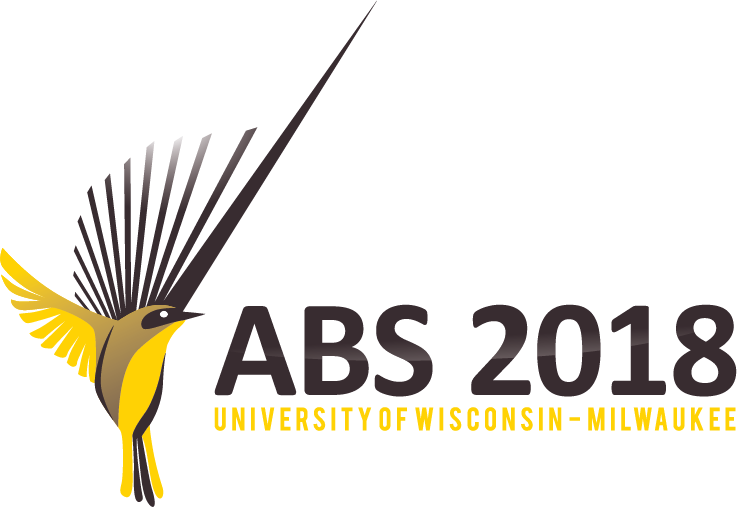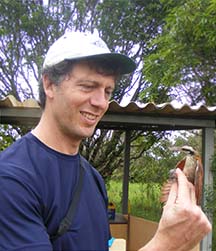Keynote & Plenaries
Keynote & Plenaries
Damian Elias Complex Communication In Spiders: How We Discovered That We Don't Know Anything This talk will address research investigating the evolution and function of complex signals in animals. Jumping spiders have long been renowned for their visual courtship behaviors. Recently work has revealed that in some groups, vibratory acoustic songs have evolved in concert with visual behaviors. This talk will address complex signal evolution in these groups to understand the form and function of complex signaling behavior and evolution of multimodal signals. Additionally, I will also discuss recent work that calls into question the framework of this emerging system and its implications to animal communication in general. |
Gordon Burghardt Are We Smart Enough To Know How Smart The Early Animal Behaviorists Are? Derived from the title of Frans de Waal’s recent book, this talk emphasizes that an appreciation of the diverse roots of animal behavior study is essential for both informed teaching and enriching current research and scholarship. Insights by early seminal authors are often ignored, insights that may have avoided subsequent controversies or spawned productive research. Even with internet access now available for much early work, historical perspectives are increasingly being lost and not considered part of necessary scholarship or graduate programs. Animal behavior textbooks are often misleading and simplistic. Four authors (among many others), all writing 100 or more years ago, merit serious re-reading. These four are James Mark Baldwin, Margaret Floy Washburn, Jakob von Uexküll, and Wallace Craig. For example, this year marks 100 years since Craig’s seminal 1918 paper on appetites and aversions in instinct, which laid out a still viable framework for studying the sequential organization of behavior. Behavioral neuroscience is increasingly incorporating Craig’s work. Behavior systems approaches, originally applied to learning, formulated by Timberlake, Hogan, Domjan, and others, were derived from this pioneering work by Craig, and later, by Tinbergen and Baerends. These provide recent examples of possible ways forward on enduring topics, but many others await. |
Katie Slocombe Chimpanzee Communication: Have We Underestimated Vocalisations? This talk will explore several aspects of chimpanzee communication and challenge some traditional assumptions that have been made about primate vocal abilities. First, I’ll review evidence that chimpanzee vocalisations can provide specific information for listeners about events or objects in the external world, and thus function referentially. Functionally referential calls were once seen as an important aspect of continuity between human and animal communication, but more recently the importance of probing the psychological mechanisms underpinning these calls has been highlighted. In this regard, it is widely assumed that compared to great ape gestural communication, primate vocal communication is far less flexible and largely produced in an unintentional manner, creating a chasm between non-human primate vocal communication and human language. I will challenge these assumptions with observational and behavioural experiments conducted with captive and wild chimpanzees. I will then examine the validity of comparisons between vocal and gestural communication in non-human primates, before presenting recent and ongoing work that aims to take a more holistic, multimodal approach to understanding chimpanzee communication. |
George W. Uetz ABS Fellows Talk: Multimodal Communication In Wolf Spiders: Content, Context and Consequences Spiders are predatory and sexually cannibalistic, thus their mating strategies reflect a unique position at the intersection of sexual and natural selection. The Brush-legged wolf spider Schizocosa ocreata is one of several emerging spider models, in which studies of courtship and mating have elucidated aspects of signaling and its evolution. Male S. ocreata court females using multimodal (visual and vibratory) signals that convey male quality information used in female mate choice. However, courtship in S. ocreata takes place within a communication network, where signals of courting males may be perceived by both intended receivers (females) and eavesdroppers (competitor males, predators). As a consequence, multimodal signaling behavior may be subject to selection from multiple opposing forces. I will discuss examples from past and current work using video and vibratory playback experiments as well as live observation to examine information content of spider signals, behavioral plasticity and context-dependence in mate choice and fitness consequences from eavesdropping conspecifics and predators. |
Jeff Podos, ABS President Galapagos Finches In A Web of Adaptation This talk will survey recent research on Darwin’s finches of the Galápagos islands. Connections will be drawn across a web of these birds’ ecological, behavioral, and natural history traits, including feeding niches, beak form and function, acoustic phenotypes, and patterns of territorial song discrimination. Understanding such connections can frame predictions about the temporal and spatial dynamics of evolutionary processes including population divergence, reproductive isolation, and speciation. More generally, I will argue that tight connections among diverse ecological and phenotypic traits, paired with intrinsic capacities for phenotypic plasticity, have facilitated some of nature’s most pronounced cases of adaptive radiation.
|





